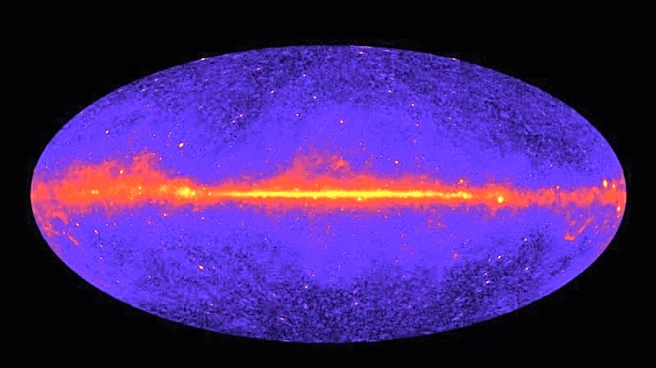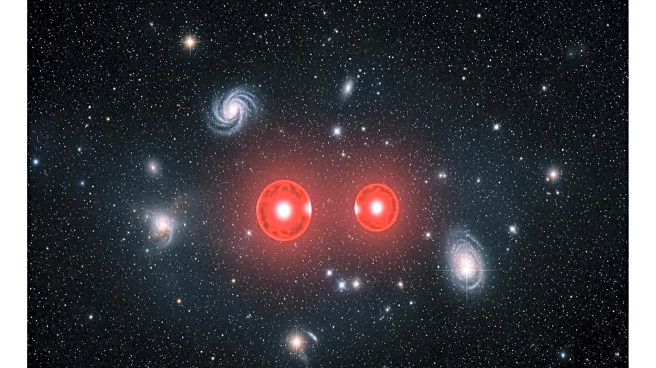What's Happening?
Researchers at the University of York have proposed a new theory suggesting that dark matter, which constitutes over 80% of the Universe's mass, may leave subtle color 'fingerprints' on light. According
to the study published in Physics Letters B, light passing through regions rich in dark matter could acquire a faint red or blue tint, depending on the type of dark matter present. This effect is currently undetectable by existing telescopes but may be observable with future ultra-sensitive observatories like the European Extremely Large Telescope and NASA's Nancy Grace Roman Space Telescope. The researchers compare this phenomenon to indirect interactions through intermediaries like the Higgs boson, allowing photons to scatter slightly off dark matter particles.
Why It's Important?
The discovery of color shifts in light due to dark matter could revolutionize our understanding of the Universe's composition. By identifying these 'fingerprints,' scientists may be able to distinguish between competing dark matter models, such as WIMP-based or purely gravitational. This advancement could provide insights into the nature of dark matter, a fundamental yet elusive component of cosmology. The ability to detect these shifts would enhance our knowledge of the Universe's structure and dynamics, potentially leading to breakthroughs in astrophysics and cosmology.
What's Next?
Future telescopes with enhanced sensitivity are expected to play a crucial role in detecting these color shifts. Researchers will focus on analyzing light from dense regions like galactic centers to identify potential 'fingerprints' left by dark matter. If confirmed, this hypothesis could guide the direction of dark matter research, optimizing resource allocation and experimental strategies. The scientific community will continue to explore the implications of these findings, aiming to unlock the mysteries surrounding dark matter and its influence on the Universe.












